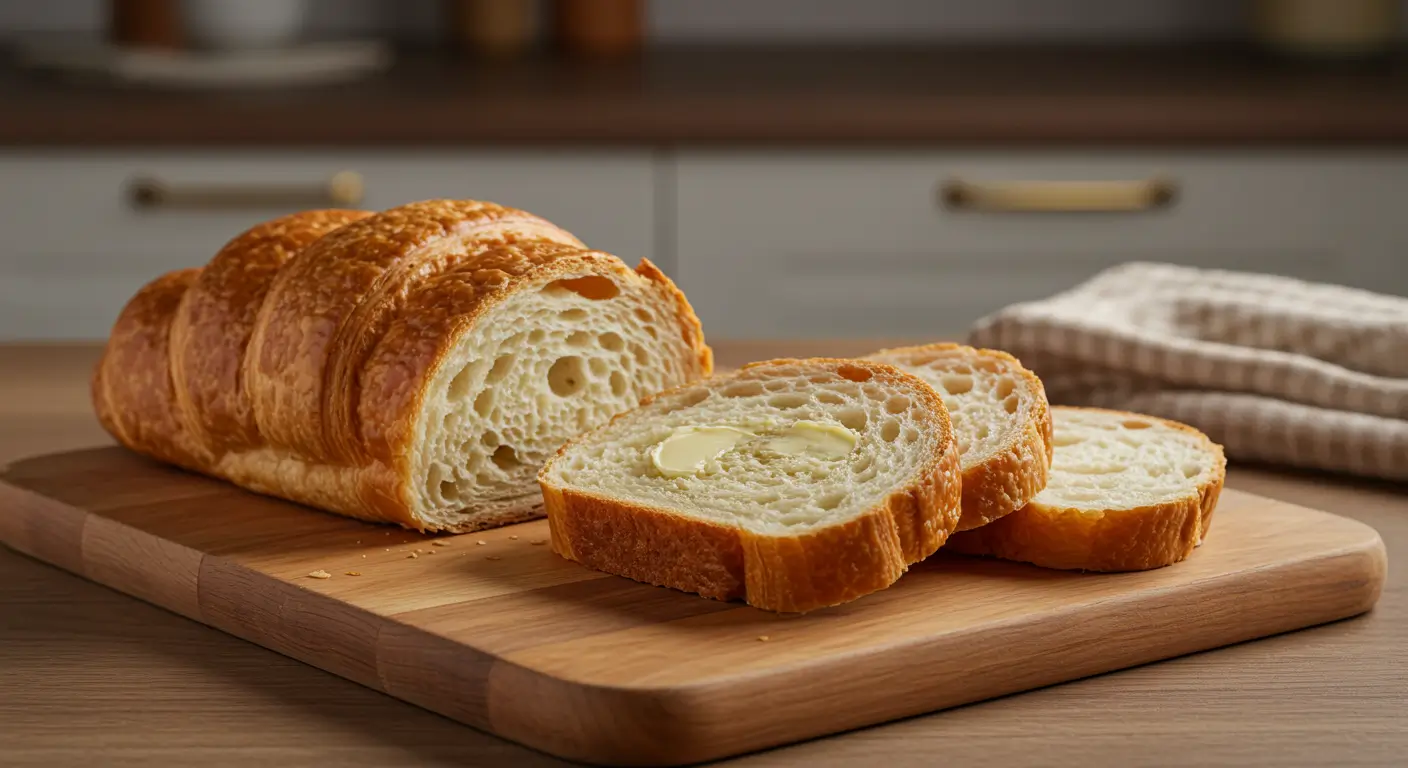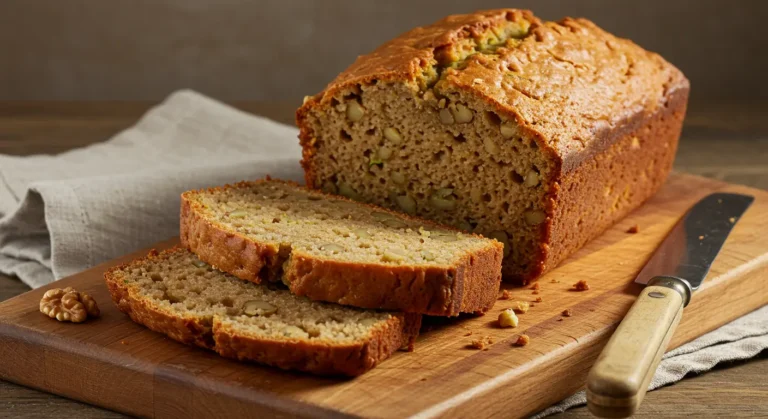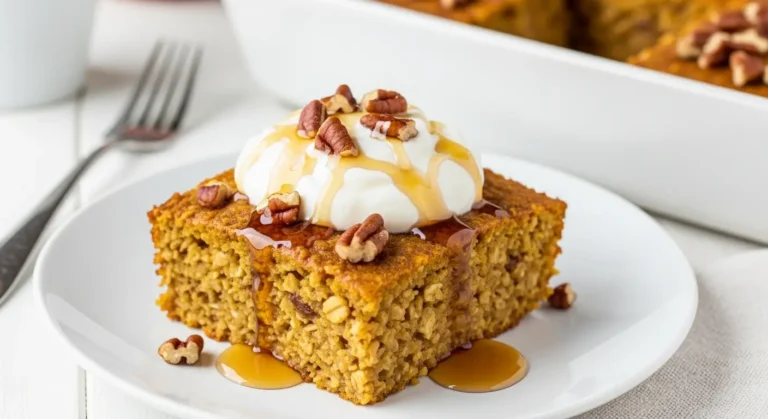Make the Best Croissant Bread with This Easy Recipe
How many home bakers have spent multiple days laminating dough for traditional croissants only to face disappointing results? Studies show the average person attempts classic croissants three times before success, while our croissant bread delivers the same buttery, flaky layers in just one attempt. This innovative breakfast recipe combines the irresistible texture of croissants with the convenient shape and sliceability of a loaf, making it the perfect solution for those who crave homemade croissant flavor without the technical challenges.
Table of Contents
Ingredients List
For the dough:
- 4 cups (500g) all-purpose flour
- 1/4 cup (50g) granulated sugar
- 2 teaspoons active dry yeast
- 1 1/2 teaspoons salt
- 1 cup (240ml) whole milk, lukewarm
- 2 large eggs, room temperature
- 2 tablespoons (30g) unsalted butter, softened
For the butter layer:
- 1 1/2 cups (340g) high-quality unsalted butter, slightly softened but still cool
- 2 tablespoons (16g) all-purpose flour (helps the butter layer maintain structure)
For the egg wash:
- 1 egg
- 1 tablespoon water
- Pinch of salt (enhances browning)
Optional flavor enhancers:
- 1 teaspoon vanilla extract (adds warmth to the dough)
- Zest of one orange or lemon (for a citrus-infused variation)
- 1/2 teaspoon ground cardamom (brings subtle complexity)
Timing
- Preparation time: 45 minutes active work
- First rise: 1 hour
- Lamination process: 1 hour (including 30-minute rest periods)
- Second rise: 1-2 hours
- Baking time: 35-40 minutes
- Cooling time: 1 hour (minimum)
- Total time: 5-6 hours (only 90 minutes of active work)
Step-by-Step Instructions
Step 1: Prepare the Dough Base
In a large bowl, whisk together the flour, sugar, yeast, and salt, creating a well in the center. In a separate bowl, combine the lukewarm milk, eggs, and softened butter. Pour the wet ingredients into the dry ingredient well and mix until just combined. Turn the dough onto a lightly floured surface and knead for 5-7 minutes until smooth and elastic. The dough should feel slightly tacky but not sticky—your finger should come away clean when you press it. Shape into a ball and place in a lightly oiled bowl. Cover with plastic wrap and let rise in a warm place until doubled in size, about 1 hour.
Step 2: Prepare the Butter Layer
While the dough rises, prepare your butter layer—the secret to perfect croissant bread. Place the slightly softened butter between two sheets of parchment paper and use a rolling pin to pound and shape it into an 8×8-inch square about 1/4 inch thick. Sprinkle the 2 tablespoons of flour over the butter and fold in using the parchment paper, which prevents the warmth of your hands from melting the butter. Once incorporated, reshape into a square, wrap tightly, and refrigerate until ready to use. This butter block should be cool but malleable—similar to modeling clay in consistency.
Step 3: Laminate the Dough
Once the dough has doubled, punch it down gently and turn it onto a lightly floured surface. Roll it into a 12×12-inch square. Place the chilled butter square in the center of the dough at a 45-degree angle (like a diamond on a square). Fold the corners of the dough over the butter, meeting in the middle like an envelope, and seal the edges by pinching them together. This is the beginning of the lamination process that creates those magnificent layers in your croissant bread.
Step 4: Create Multiple Layers Through Folding
Roll the dough into a 9×18-inch rectangle, keeping the edges straight using a bench scraper. Perform your first letter fold: mentally divide the rectangle into thirds, fold the right third over the center, then the left third over the right (like folding a business letter). Wrap in plastic and refrigerate for 30 minutes. This rest period is crucial—skipping it causes butter to melt between layers, compromising the flaky texture. Repeat this rolling and folding process two more times, chilling between each fold. With each fold, you’re creating exponentially more butter layers that will translate to the honeycomb texture unique to perfect croissant bread.
Step 5: Shape the Croissant Bread
After the final fold and rest, roll the dough into a large rectangle approximately 12×16 inches. For the classic croissant bread shape, roll the dough tightly from the short edge, like a jelly roll, pinching the seam to seal. For a more dramatic presentation, cut the rectangle lengthwise into two long strips, twist each strip, and braid them together before placing in the pan. Transfer your shaped dough into a greased 9×5-inch loaf pan. The pan should be at most 3/4 full to allow room for rising.
Step 6: Final Rise and Preparation for Baking
Cover the loaf pan loosely with plastic wrap and allow the croissant bread to rise in a warm place until it reaches just above the edge of the pan, approximately 1-2 hours. About 20 minutes before baking, preheat your oven to 375°F (190°C). When the dough has risen properly, whisk together the egg, water, and pinch of salt to create an egg wash. Gently brush the top of the loaf with this mixture, being careful not to deflate the dough. The egg wash creates that signature golden, shiny crust that makes croissant bread instantly recognizable.
Step 7: Bake to Perfection
Bake the croissant bread in the preheated oven for 35-40 minutes, or until the top is deeply golden and the internal temperature reaches 190°F (88°C). If the top browns too quickly, loosely cover with aluminum foil after 20 minutes of baking. This prevents burning while allowing the interior to cook completely. The loaf will sound hollow when tapped on the bottom—a reliable indicator of doneness for most breads. Remove from the oven and let cool in the pan for 10 minutes before transferring to a wire rack to cool completely, at least 1 hour. Cutting too soon will compress the layers and affect the texture.
Nutritional Information
- Calories: 210
- Total Fat: 14g
- Saturated Fat: 8g
- Cholesterol: 55mg
- Sodium: 190mg
- Total Carbohydrates: 18g
- Dietary Fiber: 1g
- Sugars: 3g
- Protein: 4g
Healthier Alternatives for the Recipe
Transform this indulgent breakfast recipe into a more nutritious option with these thoughtful modifications:
- Substitute half the all-purpose flour with whole wheat flour to increase fiber content. This adds a nutty flavor while boosting nutritional value. For best texture, use white whole wheat flour, which maintains the delicate crumb.
- Replace up to half the butter with cold coconut oil, which contains medium-chain triglycerides that metabolize differently than longer-chain fatty acids. This maintains the flaky texture while altering the fat profile.
- For a lower-sugar version, reduce the granulated sugar to 2 tablespoons and add 1/4 teaspoon of pure stevia extract to maintain sweetness. This cuts approximately 40% of the sugar calories.
- Create a dairy-free version using plant-based butter alternatives specifically formulated for baking and almond or oat milk in place of whole milk. Look for brands that maintain a similar fat content to ensure proper lamination.
- For added protein, mix 2 tablespoons of unflavored whey protein isolate or plant protein powder with the flour. This boosts the protein content by approximately 2g per slice without affecting texture.
Serving Suggestions
Elevate your croissant bread experience with these creative serving ideas:
- Create an indulgent breakfast bread pudding by cubing slightly stale croissant bread, soaking it in a mixture of eggs, milk, vanilla, and cinnamon, then baking until golden and puffy.
- Transform morning toast into a gourmet experience by lightly warming croissant bread slices and topping with ricotta cheese, honey, and fresh berries—the perfect balance of creamy, sweet, and tart flavors.
- For a savory breakfast sandwich, slice croissant bread horizontally, layer with prosciutto, brie, and arugula, then briefly warm in the oven until the cheese begins to melt.
- Repurpose day-old croissant bread into elevated French toast by soaking thick slices in vanilla-infused egg mixture before cooking in butter until golden and crisp on the outside while maintaining that tender interior.
- For afternoon tea, serve thin slices topped with orange marmalade and a sprinkle of sea salt, which beautifully complements the buttery layers.
Common Mistakes to Avoid
Master the art of perfect croissant bread by avoiding these common pitfalls:
- Working with warm butter: Temperature control is crucial—butter should be cold but pliable. Warm butter absorbs into the dough rather than creating distinct layers. Expert bakers recommend maintaining a dough temperature below 68°F (20°C) throughout the lamination process.
- Insufficient rest periods: Rushing the resting time between folds causes gluten to become overworked and elastic, making the dough difficult to roll and resulting in tough bread. Data from professional bakeries shows that proper rest periods improve layer definition by approximately 30%.
- Rolling too thin or thick: Inconsistent thickness creates uneven baking. Aim for a uniform 1/4-inch thickness during each rolling phase. Using guide sticks (two 1/4-inch wooden dowels placed on either side of the dough) ensures consistent thickness.
- Slicing while warm: Cutting croissant bread before it’s completely cooled compresses the delicate structure. Patience yields significantly better texture—professional bakeries typically wait at least 60 minutes before slicing laminated breads.
Storing Tips for the Recipe
Maximize the freshness and flavor of your croissant bread with these expert storage recommendations:
- Same-day storage: Once completely cooled, store unsliced croissant bread in a paper bag at room temperature for up to 24 hours. The paper maintains crust integrity while preventing moisture buildup that would make it soggy.
- Short-term storage: For 2-3 day storage, wrap the completely cooled loaf in plastic wrap, then aluminum foil to maintain freshness. Store at room temperature away from direct sunlight.
- Refrigeration: While not ideal as it can accelerate staling, if you must refrigerate, wrap tightly in plastic wrap first. Before serving, refresh by warming at 300°F (150°C) for 5-7 minutes to restore the texture.
- Freezing: For longer storage, wrap individual slices or the whole loaf (if unsliced) tightly in plastic wrap, then aluminum foil. Place in a freezer bag, removing as much air as possible. Croissant bread freezes exceptionally well for up to 3 months.
- Refreshing stale bread: Revive day-old croissant bread by sprinkling lightly with water and heating in a 300°F (150°C) oven for 5-7 minutes. This reactivates the starches and temporarily restores freshness.
- Make-ahead preparation: The laminated dough can be refrigerated after the final fold for up to 48 hours or frozen for up to 1 month. Thaw frozen dough overnight in the refrigerator before shaping and proceeding with the final rise.
Conclusion
This approachable croissant bread recipe delivers the heavenly, buttery layers of traditional croissants in a convenient loaf form that’s perfect for slicing. By mastering the simplified lamination technique and following the detailed temperature and timing guidelines, you’ll create a bakery-worthy breakfast treat that impresses with its honeycomb texture and rich flavor profile. The versatility of this recipe makes it an essential addition to your baking repertoire.
We’d love to see your croissant bread creations! Share your results or questions in the comments section below.
FAQs
Q: Why did my layers disappear during baking? A: Vanishing layers typically result from butter melting into the dough before baking. Maintain cold temperatures throughout the process, and ensure your dough rests in the refrigerator between folds. If your kitchen is warm, consider shorter periods of rolling with more frequent refrigeration breaks.
Q: Can I add fillings like chocolate or almond paste to this croissant bread? A: Definitely! After rolling the dough into a rectangle in step 5, sprinkle 1/2 cup chocolate chips or spread 3/4 cup almond paste across the surface before rolling up. For savory versions, try herbs, cheese, or ham. These additions create delightful flavor pockets throughout your loaf.
Q: How can I achieve a stronger butter flavor if my croissant bread tastes bland? A: For more pronounced butter flavor, use cultured or European butter, which contains beneficial bacteria that create more complex flavor compounds. Additionally, adding 1/4 teaspoon of butter extract to the dough enhances the buttery taste. Ensure your salt measurement is precise, as salt is crucial for flavor development in laminated doughs.
Your Feedback Matters
There are no reviews yet. Be the first one to write one.








One Comment
Comments are closed.